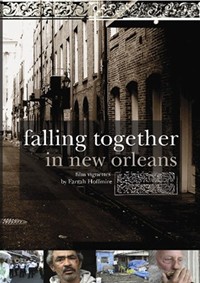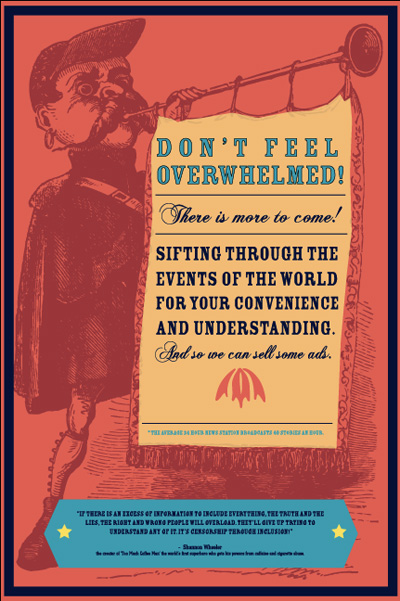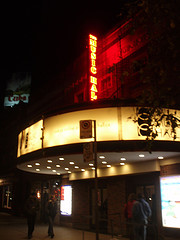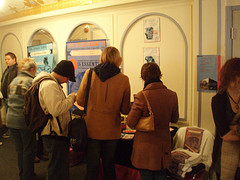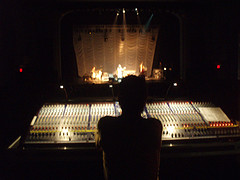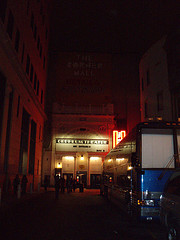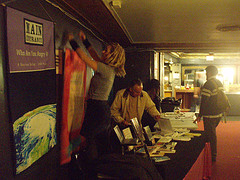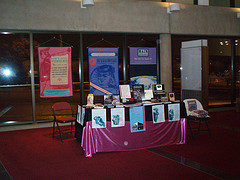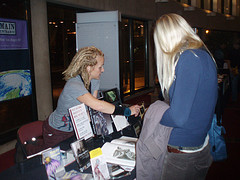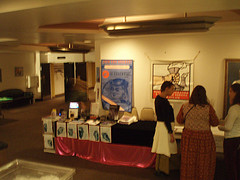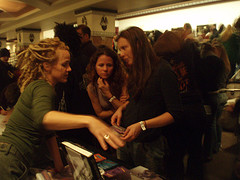FALLING TOGETHER IN NEW ORLEANS: A Series of Video Vignettes
The trailer for Falling Together in New Orleans
Solo Journalist-Documentary Artist, Farrah Hoffmire was inspired by grassroots organizing and volunteer efforts in the weeks and months after Hurricane Katrina. She has traveled to New Orleans numerous times to create a solo work that is part art-vignette, part documentary film and part grassroots journalism.
In stark contrast to the failure and corruption stories that have dominated mass-media coverage, Falling Together introduces us to powerful people fighting to save lives, preserve culture and bring a sense of well-being back to New Orleans. Conceived as an ongoing, subscription-based platform to follow events in New Orleans as they unfold over the next few years, it also explores the ongoing complexities of rebuilding in areas of the city still severely damaged -- such as the Lower 9th Ward. The film features music by Ani Difranco as well as some of New Orleans’s top musicians.
The film series has been screened at the following:
- Oral History Association national conference (Little Rock, AR)
- Langston Hughes African American Film Festival (Seattle, WA)
- Lake Eden Arts Festival (Asheville, NC)
- Zeitgeist Film Series (Tulane University, New Orleans)
- Hurricane Katrina Campus Media Project (worldwide 2007-2008)
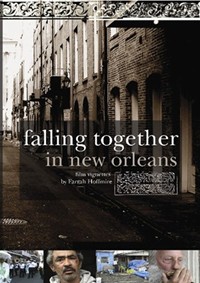
Vignette 1: Lewis Taylor Is Always Home (released October 2006)
- We’ll meet Lewis Taylor, an elderly gentlemen and “displaced resident” as he finds his family and visits what once was his home, a small fishing village called Boothville. Boothville sits at the tip of Louisiana’s coastline, a place where Taylor spent his whole life farming and fishing. We follow Taylor along his journey as he accepts his fate with humor and insight.
Vignette 2: The Art of Falling Together (released April 2007)
- Witness grassroots groups, volunteers, and residents, as they rebuild threatened neighborhoods such as the Seventh and Ninth Wards immediately after hurricanes Katrina and Rita. Unlike the millions who thought about it watching the story unfold on CNN, meet the people who dropped everything and traveled to New Orleans to see how they could help. It changed some so dramatically they could not leave.
Vignette 3: Emergency Communities
- Emergency Communities - Summer 2007 update. Reacting shortly after the Hurricane in 2005, Emergency Communities set up the Made with Love Cafe in the devastated St. Bernarnds Parrish. OPP cameras visited EC in Winter 2005 - right after the storms and told thier amazing story in Vignette 2. We visited EC again in the Summer of 2007 where they are still working hand in hand with the hardest hit areas of New Orleans. Now in the Lower 9th Ward, they face incredible odds but are buyoed by the altruistic efforts of volunteers and residents who treat each other as equals.
Vignette 4: Social Dress New Orleans
- Takashi Horisaki was working 20 hour days in the 100 degree heat when Farrah found him completing an art project like none other she had ever seen. As a project to raise awareness about the situation in the Lower 9th Ward he made a replica of the surface of a shotgun-style house in latex, then taking the replica to New York's Socrates Sculpture Park. Hear about the project and see a true artist devoted to a true cause.
 aid,
aid,  ani,
ani,  culture,
culture,  difranco,
difranco,  humanitarian,
humanitarian,  hurricane,
hurricane,  katrina,
katrina,  levee,
levee,  louisiana,
louisiana,  new orleans,
new orleans,  nola,
nola,  relief | in
relief | in  Video Travel
Video Travel 
